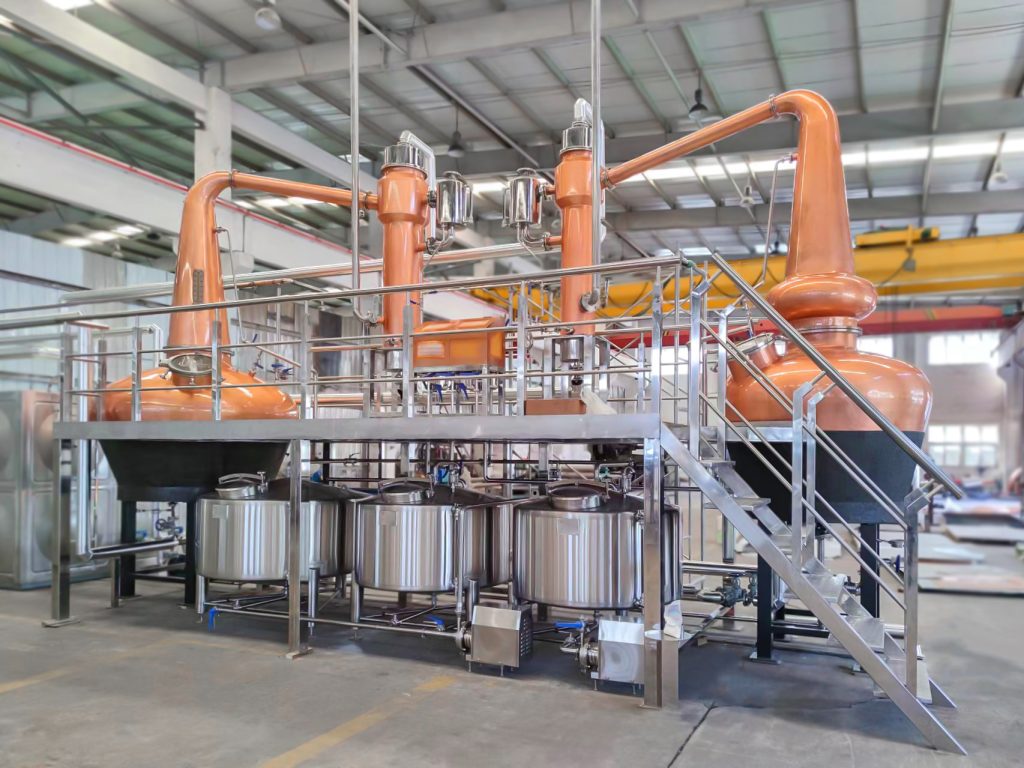Introduction

Distillation columns are indispensable in chemical processing industries for separating mixtures based on differences in boiling points. Temperature control plays a pivotal role in optimizing the efficiency and effectiveness of these columns. This blog explores the significance of temperature control in distillation columns, focusing on its impact on separation efficiency, energy consumption, and overall process economics.
Importance of Temperature Control
Temperature control in distillation columns is crucial for achieving high separation efficiency. The principle behind distillation is to separate components of a mixture based on their boiling points. By controlling temperatures at different stages of the column, operators can maximize the vapor-liquid equilibrium and enhance the separation of components with similar boiling points. This precision not only improves product purity but also reduces the energy required for separation processes, thereby enhancing overall process economics.
Components of Temperature Control Systems
Effective temperature control systems in distillation columns typically consist of several key components. These include temperature sensors placed at strategic points within the column to monitor temperatures, temperature controllers that receive input from sensors and regulate heating or cooling mechanisms, and actuators that adjust valves and heating elements based on controller signals. Together, these components form a closed-loop system that continuously monitors and adjusts temperatures to maintain optimal conditions for separation.
Case Studies and Applications
Several case studies and practical applications demonstrate the impact of temperature control on distillation column performance. For instance, in a petrochemical refinery, precise temperature control in a vacuum distillation column led to a significant reduction in energy consumption and increased production efficiency. By maintaining temperatures at optimal levels, the refinery was able to achieve higher yields of valuable distillates such as gasoline and diesel while minimizing the formation of undesirable by-products.
Temperature Control Techniques
Various temperature control techniques are employed in distillation columns to enhance performance:
- Feedback Control Mechanisms: Feedback control systems use temperature sensors to continuously monitor the temperature at critical points in the column. The data from these sensors are fed back to the controller, which adjusts heating or cooling mechanisms to maintain desired temperatures. This ensures stable operation and optimal separation efficiency.
- Cascade Control Systems: Cascade control involves a hierarchical control structure where multiple controllers are used to improve the response time and stability of temperature adjustments. In distillation columns, cascade control can be applied to control temperatures at different stages of the column, ensuring precise control over the separation process.
- Advanced Process Control: Advanced process control techniques utilize sophisticated algorithms and predictive models to optimize temperature profiles and overall column operation. By analyzing real-time data and process variables, these techniques can anticipate changes in operating conditions and adjust temperature setpoints accordingly, thereby maximizing efficiency and reducing energy consumption.
Role of Automation and Technology
Automation and technological advancements have revolutionized temperature control in distillation columns. Modern control systems integrate advanced sensors, actuators, and software algorithms to enable real-time monitoring and adaptive control strategies. These systems offer features such as remote monitoring capabilities, predictive maintenance alerts, and data analytics, which enhance operational efficiency and reliability.
Temperature Control Strategies Comparison
| Technique | Description | Benefits |
|---|---|---|
| Feedback Control | Uses sensor feedback to adjust temperatures continuously. | Improved stability and efficiency |
| Cascade Control | Hierarchical control system to enhance response times. | Faster adjustments and reduced oscillations |
| Advanced Process Control | Utilizes predictive models and algorithms for optimization. | Higher yields and reduced energy usage |
Case Study: Optimizing Temperature Profiles

In a hypothetical refinery setting, optimization of temperature profiles in a crude oil distillation column resulted in substantial benefits. By implementing advanced temperature control strategies, including feedback control loops and predictive modeling, the refinery achieved a 15% reduction in energy consumption and a 20% increase in the recovery of high-value distillates. This optimization not only improved process efficiency but also contributed to significant cost savings and environmental benefits.
Conclusion
In conclusion, temperature control is a critical factor in the operation of distillation columns, significantly impacting their efficiency, energy consumption, and economic viability. By implementing advanced control strategies and leveraging technological innovations, industries can achieve higher yields, improved product quality, and reduced environmental impact. The continuous evolution of temperature control systems continues to drive improvements in distillation processes, making them more efficient and sustainable.
FAQ
Q:What is the role of temperature control in distillation columns?
A:Temperature control ensures optimal separation of components with close boiling points, improving efficiency and reducing energy consumption.
Q:How does temperature affect distillation column performance?
A:Temperature influences the vapor-liquid equilibrium and heat transfer rates, crucial for achieving desired separation efficiencies.
Q:What are some common temperature control techniques used in distillation columns?
A:Feedback control loops, cascade control systems, and advanced process control algorithms are commonly employed to optimize temperature profiles.

